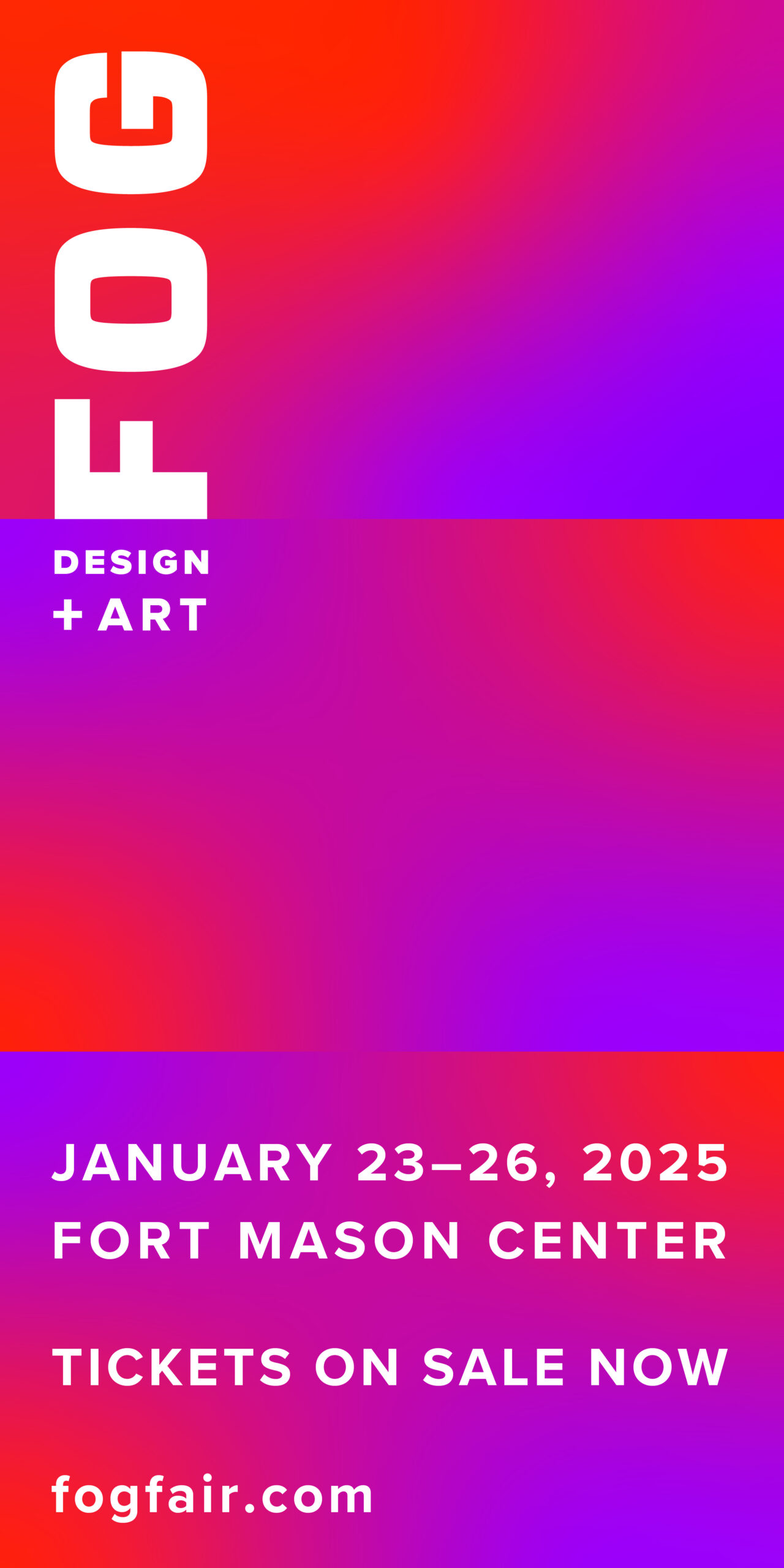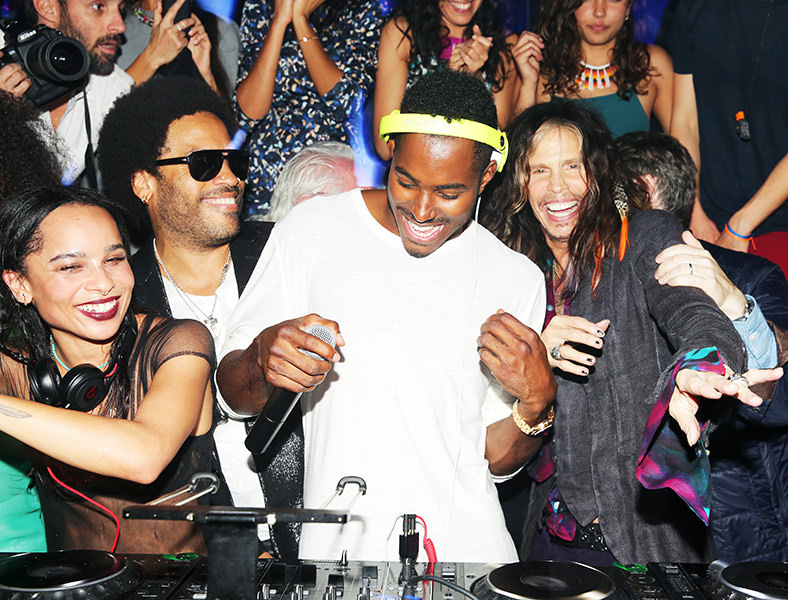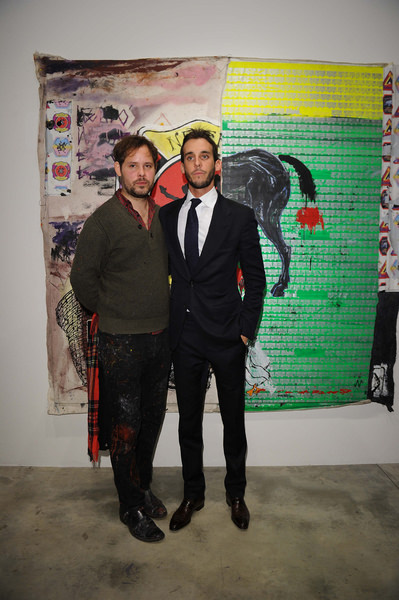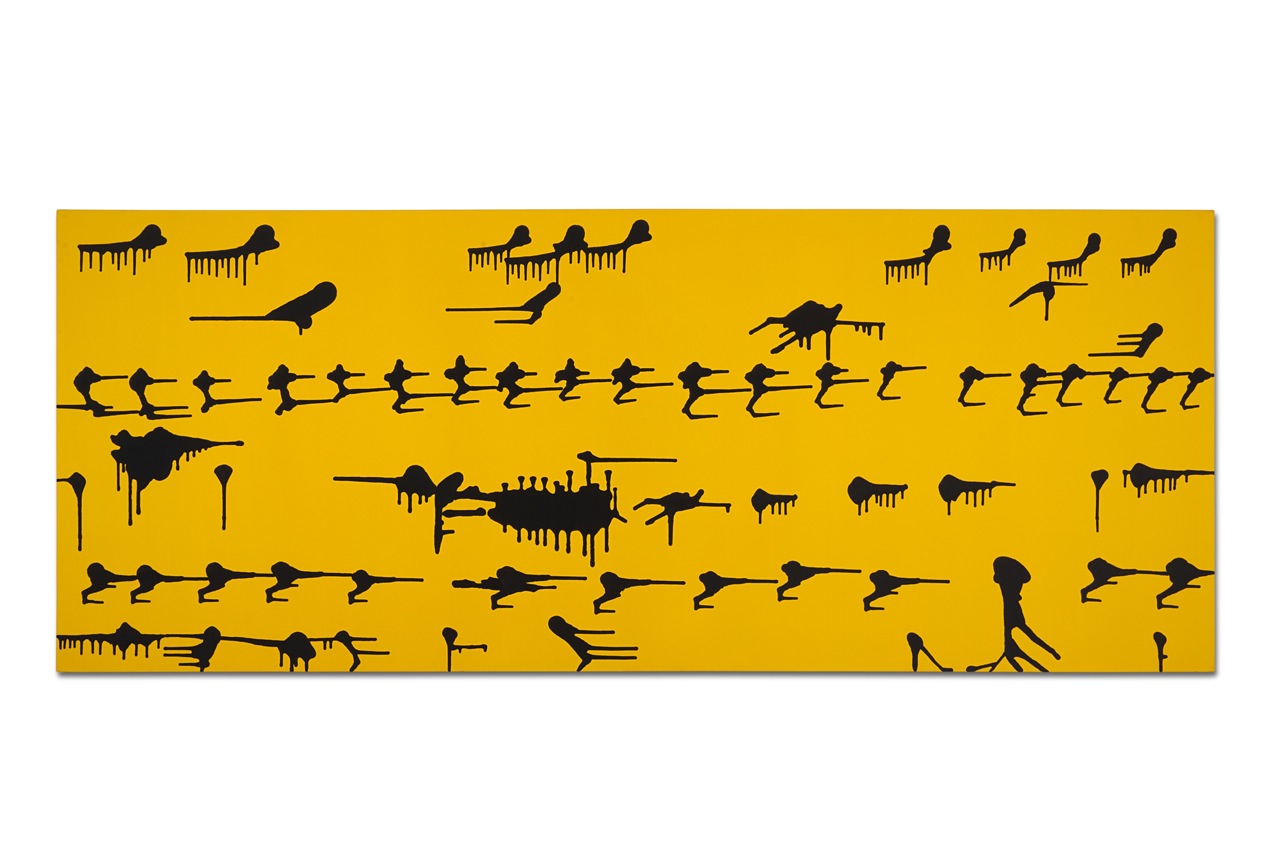Vladimir Restoin Roitfeld stands proudly in the 3rd floor space at 980 Madison where his most recent exhibition “Mercy Merci” hangs. It is a co-curated, pop-up venture (his signature style) with Bortolami’s Christine Messineo. The three-week group show, on view until February 17, pairs 35 blue-chip names with emerging ones centered on language and text-based works.
Always aiming to present unexpected shows, Roitfeld has become a notable figure in the art world, and not simply because he descends from creative royalty. While he’s not ready to settle down just yet — into a permanent gallery space — Roitfeld has a crush on the Upper East Side, a neighborhood that to him is not just where art’s greatest patrons reside, but offers a new tableau for the New York art world. The Parisian transplant does not have an art background, yet always has a rotating crop of projects on the horizon and a willingness to delve deeply into everything he undertakes.
That wealth of ambition is on display in “Merci Mercy,” and Whitewall caught up with the two curators to discuss why words, why now, and what it all means.
WHITEWALL: Why did you guys decide to base the exhibition around words?
VLADIMIR ROITFELD: The idea I had originally was to find a theme that was wide enough to connect artists of different generations, all the way down to young artists that I didn’t know. I decided, why not do a show around text, but to do it differently? Meaning lets try and have those guys that everybody expects to have in a text show, but switch it up with less expected artists.
CHRISTINE MESSINEO: We were sitting together, having hour-and-a-half long meetings over wine or tea with pens and paper — super old school — writing everything down, crossing people out and then connecting different artists. We would make these exaggerated lists.
WW: Had you two met before?
VR: We met through my sister about a year ago. The opportunity of doing a show came up at this space, so I approached her and asked if she would be interested in co-curating a show with me. We met last October and worked up until the very last week before the show.
CM: We had actually collaborated a little before because Vladimir had put one of the artists that I work with at Bortolami in the show that he did at Sothebys. It was this complicated install and we ended up chatting a lot then.
WW: The usage of text obviously differs greatly within each of the individual works, so through the curation, what themes did you draw?
CM: There are three methods in the corner in the main gallery: Michael Krebber, Ben Schumacher, and Philippe Parreno. There are ideas of repetition and reproduction in all these works. All the Krebber blog paintings are actually hand painted from blogs that talk about art making. Parreno is looking at the journals of Marilyn Monroe and using an algorithm through a robot to recreate the original journal entries. Schumacher scans a lunch and makes a 3D print of it with the receipt embedded in it. All these things lend to art making and brings the computer screen back to the hand.
VR: You can link the works in the exhibition, but I think as a starting point when you have so many different artists, you have to pick anchors in the show and make a really strong connection between the works, like we have in the other room.
WW: Like the Holzer corner?
VR: The Holzer corner. Well, the whole entire wall here, which I think is my favorite in the show.
WW: How come?
VR: I just think that it is extremely well-installed. Christine and I spent a lot of time on it. Whatever you read somehow makes sense together.
WW: What was your idea in mind when you put that together?
CM: A lot of these images are dealing with a pretty tough subject matter. I mean Jenny Holzer’s redacted government documents that had been erased. They become beautiful monochromes but it’s impossible to completely erase that history. She’s actually revealing more and I like that Aaron Young’s police barricade is in front of it, recreating some of the blockades that we understand in the text. Then there’s the language in Rashid Johnson’s Run where language is running. I would say this corner is a little aggressive. There’s an empty book by Ruscha, next to Gary Simmon’s Hollywood sign dramatically on fire with a Gilbert & George narrative about star-crossed lovers. How do you communicate that these things have an emotional impact? That’s the thought process for the way we make decisions about hanging.
VR: There is also something fun to think about with Sophie Calle. It’s a little bit about the judgment of a man, crazy love, and it just plays well with everything else that is mentioned in the [Gilbert & George] painting; from killing your lover to an animal lover to a judged lover.
CM: All this comes down to, of course, the Louise Bourgeois Merci Mercy piece.
VR: Which was the starting point of the exhibition. It was the first piece that we actually found. I had a meeting at Cheim & Read to discuss works from Jack Pierson, and I mentioned that we were looking for works that weren’t so expected. They said they had a Louise Bourgeois that would surprise.
WW: Why did you decide to make that the title and the emblem of the exhibition?
CM: It’s about language and what emerges from the same pronunciation of a word that has different meanings. You’ve have the French “thank you” and then you have “mercy.” It’s so hopeful and beautiful what emerges from two words just being closely tied.
Vladimir Restoin Roitfeld has collaborated with emerging and established artists to produce exhibitions, providing them with an artistically significant and commercially viable platform to promote their artwork in venues around the world. Since 2008, Roitfeld has worked with a diverse array of artists including Ouattara Wats, Nicolas Pol, Richard Hambleton. In 2011, he curated Hue & Cry at Sotheby’s S2 Gallery.
Christine Messineo is the Director of Bortolami Gallery in New York and organizes exhibitions and projects internationally. She is a regular contributor to Dossier Magazine and is on the Executive Committee of the Whitney Museum of American Art and serves on the committees of multiple other cultural institutions and arts related nonprofits.










